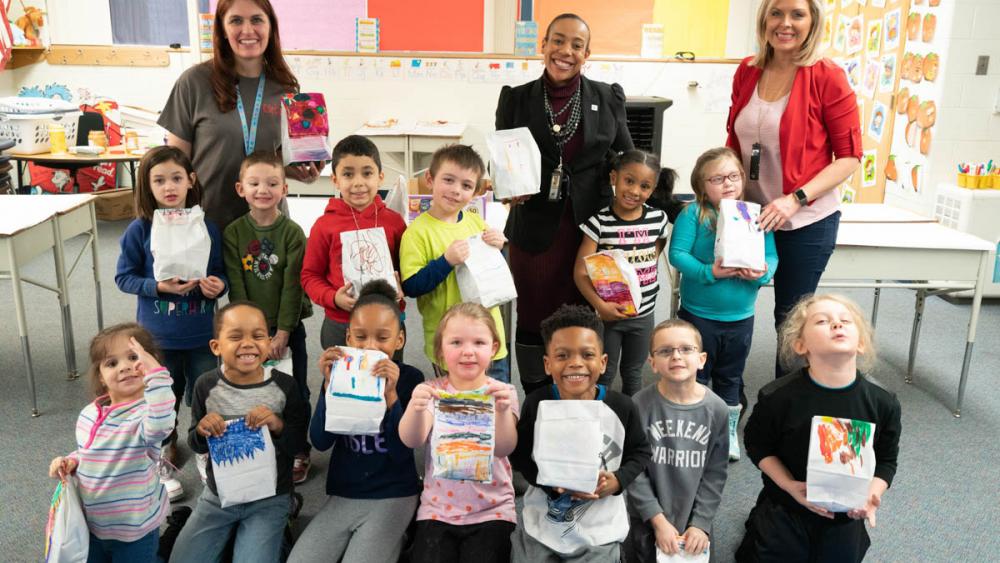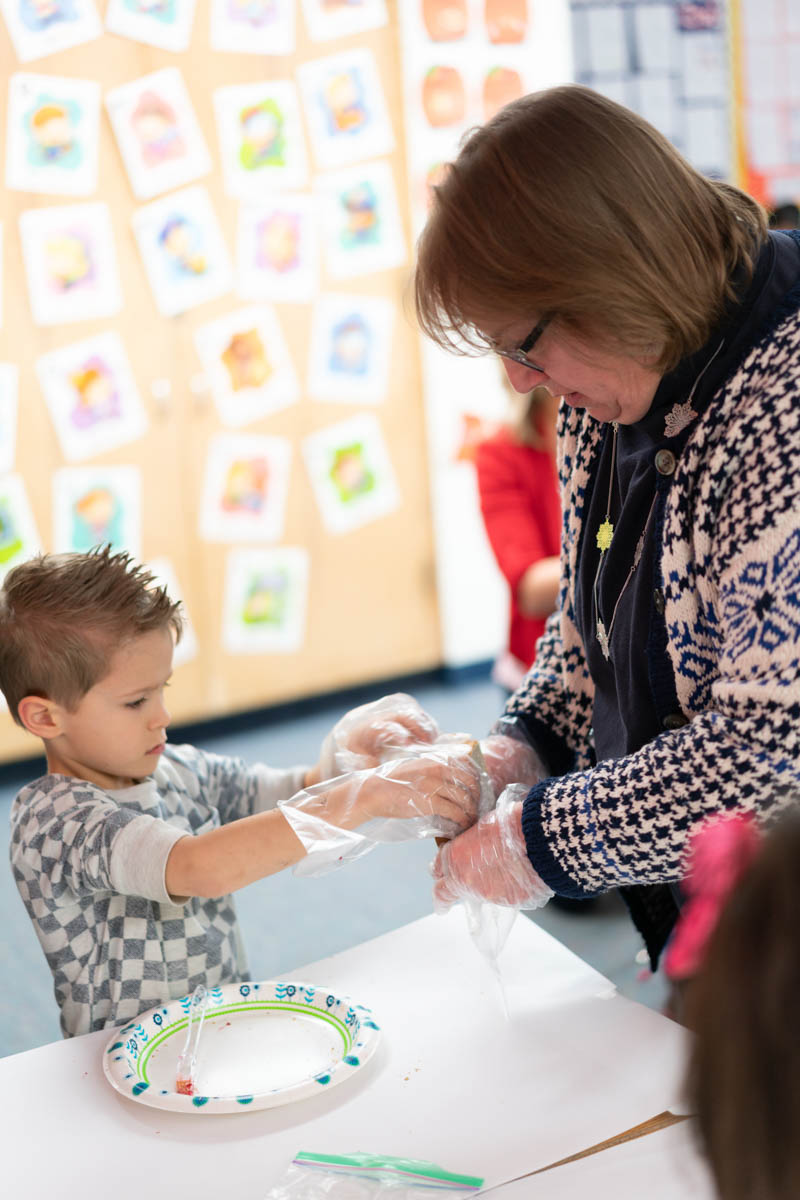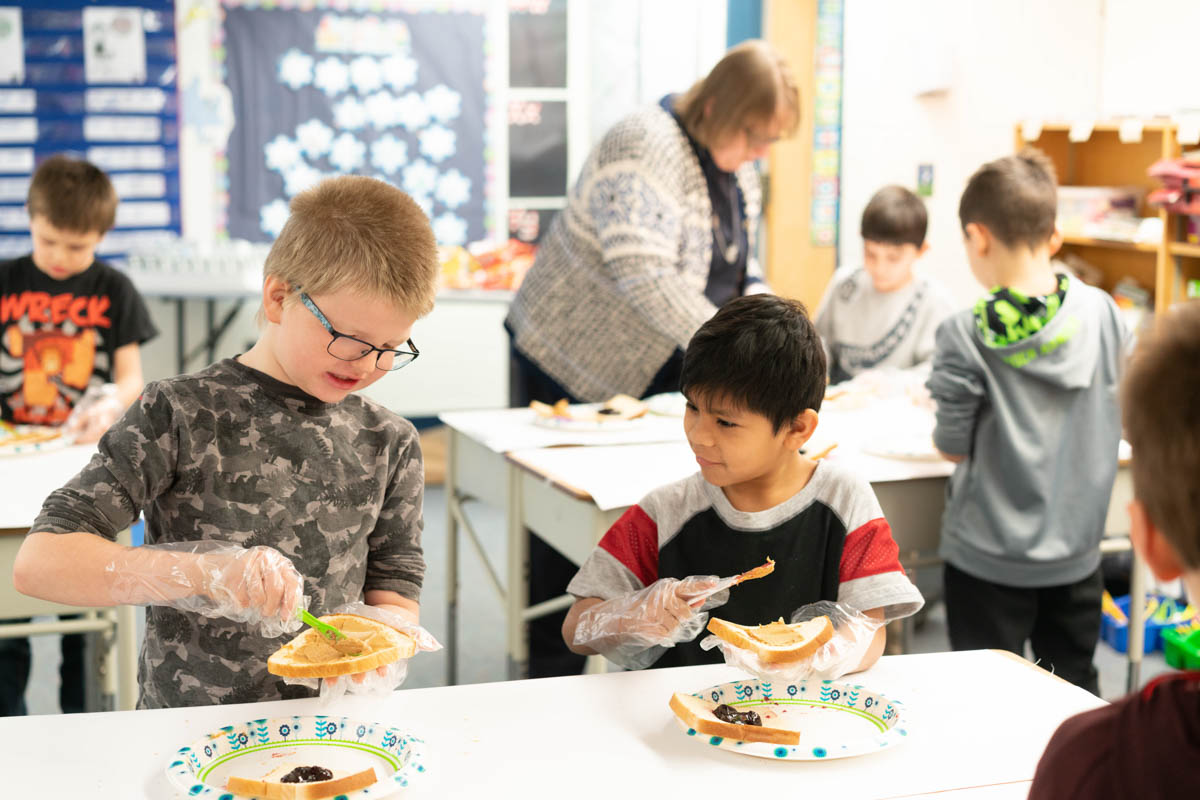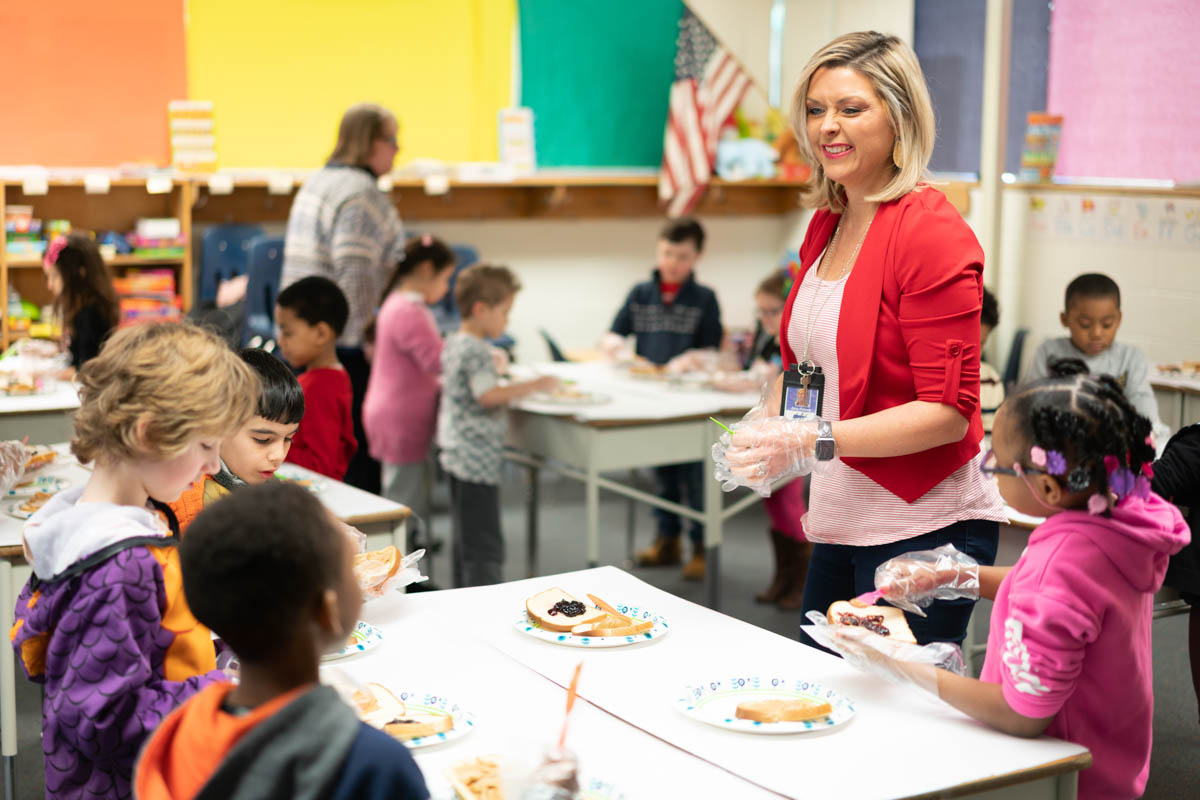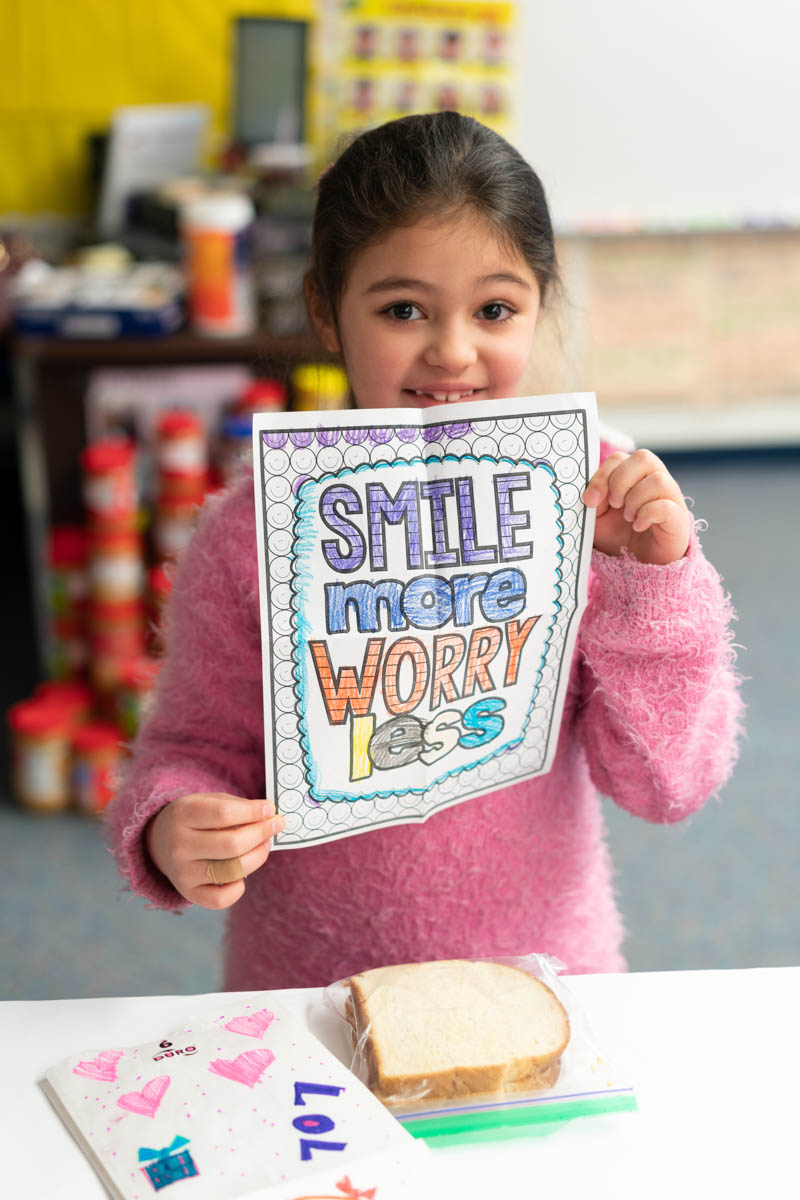Ms. Peters is an elementary teacher at Thomas A. Edison Elementary in Michigan. “Children who get a chance to be exposed to other people's challenges and unfortunate situations gain a broader sense of the world and a stronger sense of empathy,” said Peters. “Teaching philanthropy helps children who are facing their own hardships to know that they are not alone; empowering them with the confidence and the tools to know that they can change their situations and others around them as well.”
The whole school consisting of 426 kindergarten through 4th grade students participated in the Learning to Give supported project Lunches of Love. After incorporating the lesson Hunger and Homelessness and using the guiding questions of the lessons’ anticipatory set, students were exposed to philanthropy and the issue of homelessness.The students at Edison Elementary School made letters, decorated bags, and made lunches for the homeless at a local soup kitchen. They learned what philanthropy was and how they can make an impact on others. Students felt empowered to be philanthropists and several carried that feeling over into their families. “We felt that families saw that we all have something to give and we encouraged them to try this project as a family project at home,” said Ms. Peters.
This service-learning project also impacted the 450 recipients of the given bag lunches. Not only did the students help to feed those in need, students learned that those they helped now know that people in their community care about them and there is hope. “Our school district, school, and the soup kitchen now have a stronger tie to each other, thus encouraging more future projects,” reflected Ms. Peters.
Academically, the students wrote for an audience and with a purpose, which is identified as an area of deficit from testing. They were also challenged in social studies, art, and science (nutrition) as they navigated this learning and doing experience.
Emotionally, this service-learning project aligned with the school and district goals of increased social emotional awareness and improved school culture. "By improving the school culture, they can change perceptions others might have about what kind of district we are."
“As an economically challenged community, we have to marshal all of our resources to make sure that students are safe, successful and welcome every day of the school year,” said Ms. Peters. “Because we work hard to ensure this kind of educational environment, we need to do this important work in a place that is optimal for growth and well-being.”
“We have a non-verbal student at Edison that is very far below grade level in all academic areas. When he made a sandwich he LIT UP with the most giant smile!” said Ms. Peters. “He was beyond excited to have an activity at school that he could do. He at first thought the sandwich was for himself yet after we had a little chat about philanthropy, he was happy to give these lunches away. He even made several other sandwiches.”
One little girl told us "This made my heart feel good to feed someone!"
According to Ms. Peters, the big question that every student had was "When can we do this again?". It truly was a positive vibe that energized the entire school. “Especially during the dark, cold days of winter!”
This project helped show students that they can use their time, talent, and/or treasure to help others in their community. Many students said they would like to repeat this project. This lesson exposed students to the philanthropy lessons and ideal that everyone has something to give. They were inspired to help others and grew in their exposure to the issue area of homelessness and the problems they face.
